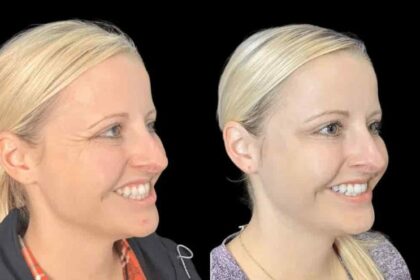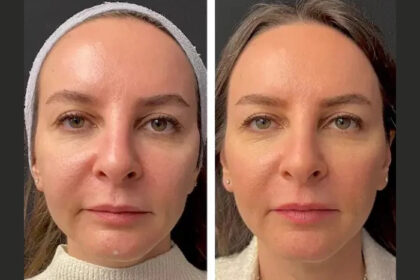Hairline restoration has become a highly sought-after solution for individuals looking to achieve a more youthful and natural appearance. Whether due to genetics, aging, or hormonal changes, a receding or uneven hairline can significantly affect one’s self-esteem. Fortunately, advanced techniques in hairline restoration now make it possible to restore hair growth in a way that looks natural and enhances overall facial harmony. Hairline restoration involves both surgical and non-surgical procedures tailored to meet individual needs, offering long-term and aesthetically pleasing results.
In this comprehensive guide, we’ll explore everything you need to know about hairline restoration, from the causes of hairline recession to treatment options and recovery tips. If you’re considering restoring your hairline, this article will serve as your complete roadmap to making an informed and confident decision.
Understanding the Causes of a Receding Hairline
Before exploring solutions, it’s important to understand why hairlines recede. Multiple factors contribute to hairline loss, including:
- Genetics: Hereditary-pattern baldness is one of the most typical causes.
- Aging: Hair naturally thins and recedes as we age.
- Stress and lifestyle: Poor nutrition, stress, and inadequate hair care may accelerate hair loss.
- Medical conditions: Autoimmune diseases, thyroid disorders, and scalp infections can also lead to hair loss.
What is Hairline Restoration?
Hairline restoration is a cosmetic and medical approach aimed at redesigning, lowering, or reshaping the frontal hairline for a more balanced and youthful impression. Depending on the area of hair loss and the individual’s goals, the process may include:
- Surgical procedures such as hair transplantation
- Non-surgical therapies to stimulate natural growth
- Medical management through medications
Hairline restoration is not just about adding hair; it’s about designing a hairline that complements the shape of the face and appears entirely natural.
Types of Hairline Restoration Procedures
1. Smart Follicular Unit Transplantation (FUT)
Smart FUT involves removing a thin strip of hair-bearing skin from the donor area (usually the back of the scalp) and dissecting it into individual follicular units under a microscope. These units are then implanted into the thinning or receding areas of the hairline.
Benefits of Smart FUT:
- High graft yield
- Effective for advanced hair loss
- Permanent and natural results
Considerations:
- Linear scar in the donor area
- Longer recovery time compared to some methods
2. Smart Follicular Unit Extraction (FUE)
FUE is a minimally invasive procedure that extracts personal hair follicles from the donor area and transplants them to the target region. It leaves no linear scar and is ideal for patients desiring a shorter recovery period.
Benefits of Smart FUE:
- No visible scarring
- Short downtime
- Ideal for those wanting to keep short hair
Considerations:
- May require multiple sessions
- Slightly lower graft survival rate compared to FUT in some cases
3. Hairline Lowering Surgery
Also known as forehead reduction surgery, this procedure physically moves the hair-bearing scalp forward to shorten the forehead and lower the hairline. This surgical approach is particularly useful for individuals with high foreheads but a healthy density of frontal hair.
Benefits:
- Immediate results
- Permanent change in hairline position
Considerations:
- Surgical risks like bleeding or infection
- Requires careful planning to ensure symmetry
4. Platelet-Rich Plasma (PRP) Therapy
PRP is a non-surgical treatment where a patient’s own blood is processed to extract growth factors, which are then injected into the scalp. PRP can stimulate existing hair follicles and promote natural regrowth, often used in conjunction with transplant procedures.
Benefits:
- Non-invasive
- Encourages natural hair growth
- Improves scalp health
Considerations:
- Multiple sessions needed
- Results may vary
Designing a Natural Hairline
A natural-looking hairline is critical for successful restoration. It needs a customized approach that takes into account:
- Facial proportions: The hairline should align naturally with facial features.
- Hair growth direction: Proper angling of grafts ensures realistic appearance.
- Age-appropriate design: A mature yet youthful look is often the goal.
- Density planning: Gradual density from front to back enhances realism.
Professional planning and artistic skill are essential to achieve symmetry, balance, and natural density distribution.
What to Expect Before the Procedure
Proper preparation is key for optimal outcomes in hairline restoration. This includes:
- Consultation and scalp assessment
- Review of medical history and medications
- Pre-procedure instructions, such as avoiding smoking and blood-thinning medications
Your provider will also evaluate the donor area’s strength and plan a realistic design based on your goals and hair quality.
The Procedure Process: Step-by-Step
Though techniques vary, the hairline restoration process generally involves the following steps:
- Local anesthesia is applied for comfort.
- Harvesting donor hair through FUT or FUE.
- Graft preparation under sterile conditions.
- Creating incisions along the planned hairline.
- Transplantation of individual grafts.
- Post-procedure care instructions are provided.
Recovery and Aftercare
Recovery plays a major role in the victory of hairline restoration. Key aftercare tips include:
- Avoid direct sun direction for a few weeks
- Refrain from strenuous activity for 7–10 days
- Sleep with the head elevated
- Gently wash the scalp as instructed
- Avoid touching or scratching the transplanted area
Minor redness, swelling, or scabbing may occur, but these typically subside within 7–10 days. Shedding of transplanted hairs is normal and expected before new growth begins.
Who is a Good Candidate for Hairline Restoration?
Ideal candidates for hairline restoration include:
- Individuals with a high or receding hairline
- Men and women with stable hair loss patterns
- Those with sufficient donor hair
- People with realistic expectations
- Individuals in overall good health
Frequently Asked Questions
How long do hairline restoration results last?
Hair transplants are permanent. However, surrounding natural hair may continue to thin over time, which is why future maintenance may be recommended.
Is the procedure painful?
Local anesthesia is used to minimize discomfort. Most patients report only minor soreness post-procedure.
Can women undergo hairline restoration?
Yes, women with a high forehead or thinning frontal hair can greatly benefit from hairline lowering or restoration.
Will people be able to tell I had the procedure?
When done correctly, the restored hairline looks completely natural and blends seamlessly with existing hair.
Conclusion
Hairline restoration offers a transformative solution for anyone struggling with hairline recession or an unbalanced forehead-to-face ratio. Through personalized treatment plans, advanced techniques, and proper aftercare, individuals can achieve a youthful, symmetrical, and completely natural-looking hairline.
Whether you choose surgical alternatives like smart FUT or smart FUE, non-surgical treatments like PRP, or a hairline-lowering approach, restoring your hairline is a powerful step toward improved confidence and self-image. The key lies in choosing the right design for your specific needs, understanding the process, and maintaining realistic expectations.
With the right approach, hairline restoration is more than a cosmetic fix—it’s a life-enhancing journey toward looking and feeling your best.
Would you like me to generate meta title and meta description for SEO?





